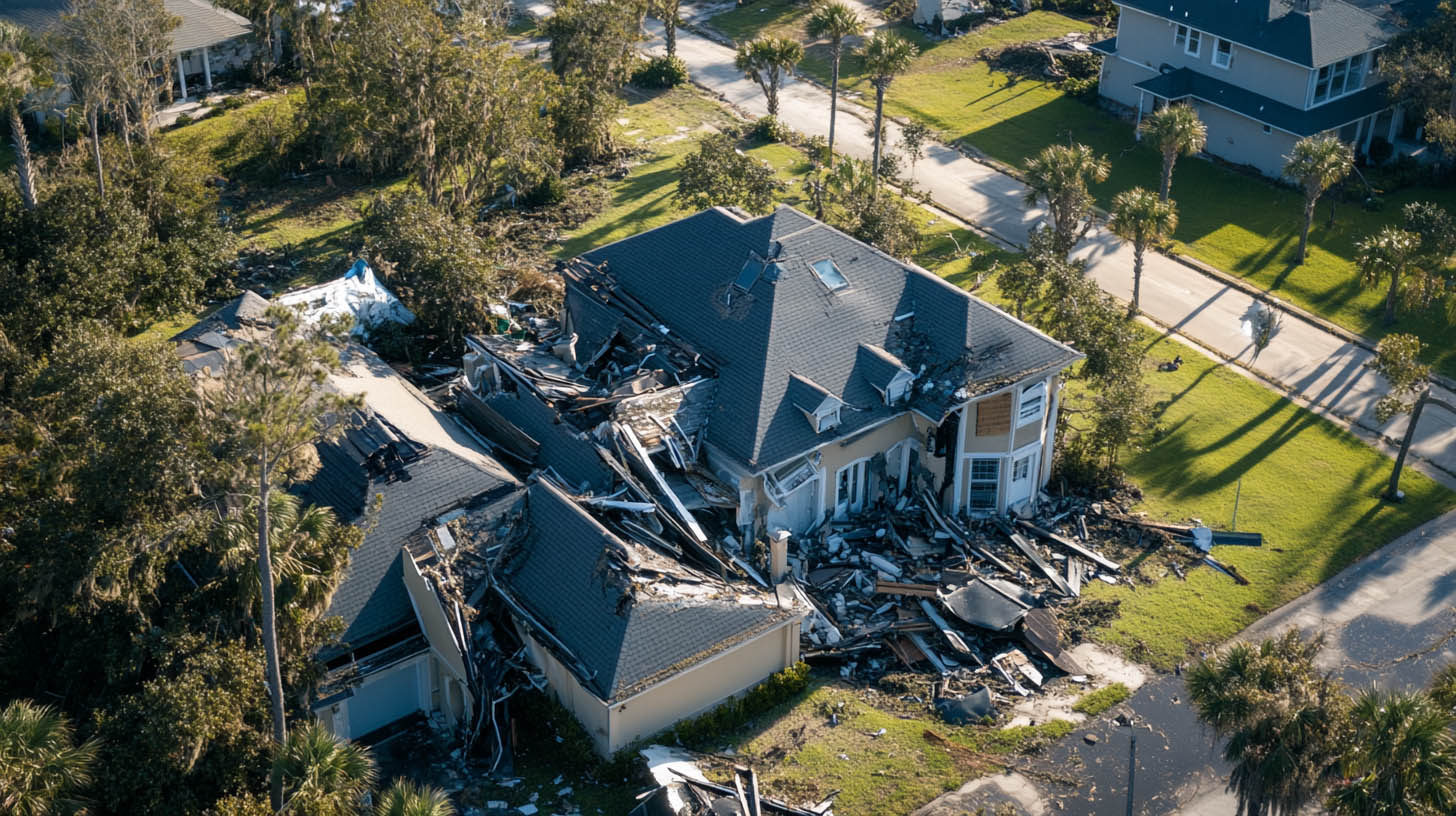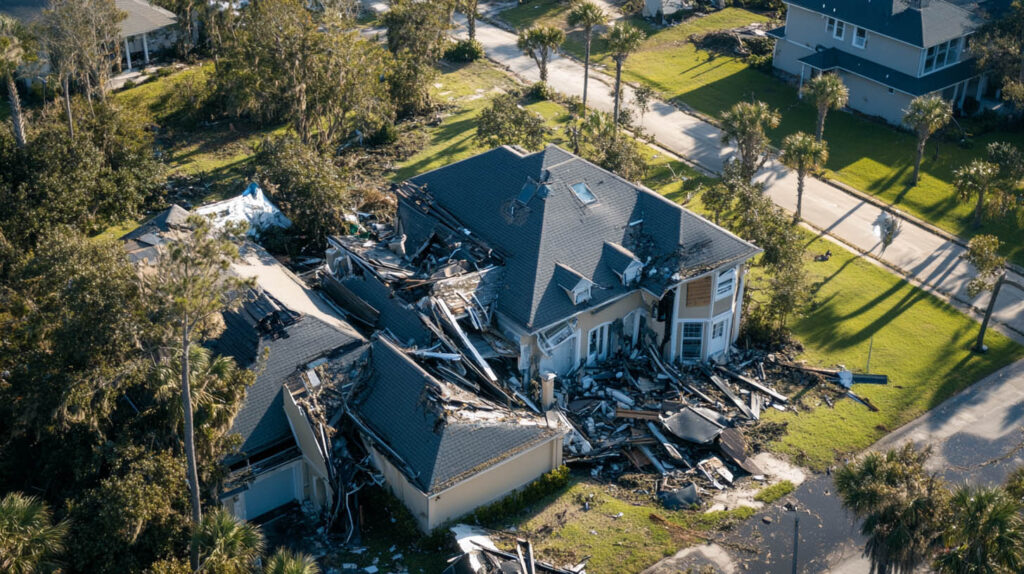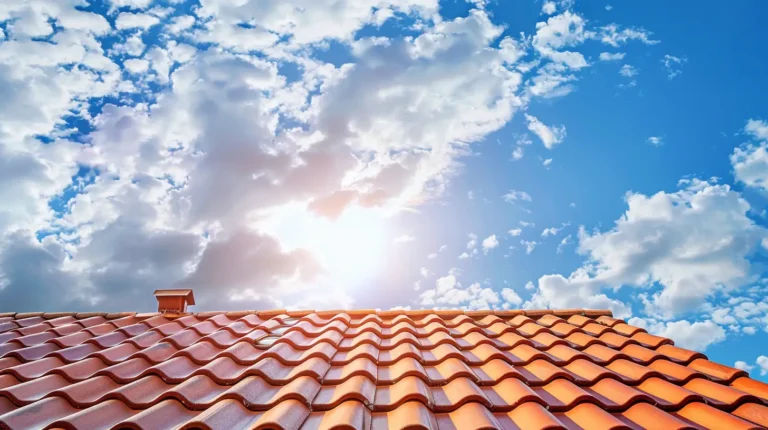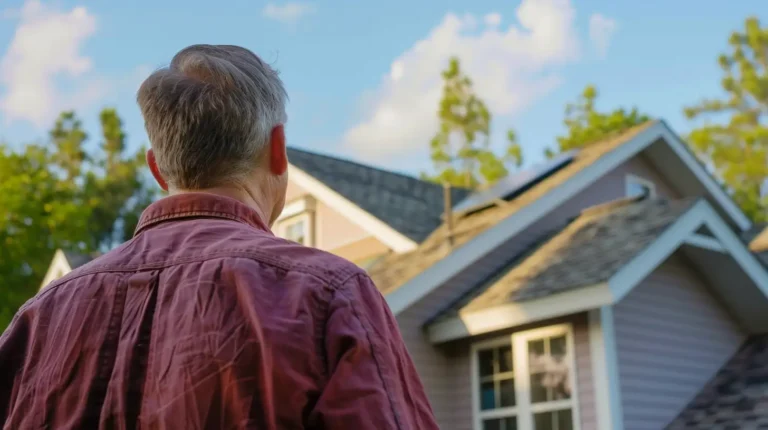
Blog
What to Do After Storm Damage to Your Neptune Beach Roof
Severe storms can wreak havoc on your home, with the roof often bearing the brunt of the damage. Knowing the right steps to take after a storm can help minimize losses and ensure quick restoration. In the U.S., storm damage accounts for nearly 40% of all insurance claims, highlighting the need for proactive measures.
Avenue Roofing, based in Jacksonville, FL, specializes in storm damage repair and provides homeowners with the guidance and expertise needed to restore their roofs efficiently.

Steps to Take After Storm Damage
1. Assess the Damage
- Start by inspecting your roof for visible damage, such as missing shingles, dents, or exposed plywood.
- Use binoculars for a closer look and document any visible issues with photographs.
- Look for water stains on ceilings or walls inside your home, which may indicate leaks.
Tip: Avoid climbing onto your roof for inspections unless it’s safe to do so.
2. Perform Temporary Repairs
- Cover exposed areas with tarps or plastic sheeting to prevent further water intrusion.
- Use buckets or containers to collect water from active leaks.
- Move valuable items away from areas affected by leaks to prevent further damage.
3. Document Everything
- Take clear photos of the damage from multiple angles.
- Keep a record of all temporary repairs, including receipts for materials used.
- Provide this documentation to your insurance company during the claims process.
4. Contact Your Insurance Company
- Notify your insurance company as soon as possible to begin the claims process.
- Provide them with the documented evidence of the damage and temporary repairs.
- Be prepared for an adjuster to visit your property for an assessment.
5. Hire a Trusted Roofing Contractor
- Choose a reputable local roofing company, like Avenue Roofing, to handle repairs.
- Avoid “storm chasers” or out-of-town contractors who may offer subpar work.
- Ensure the contractor is licensed, insured, and experienced in storm damage restoration.
Preventative Measures for Future Storms
To minimize future damage, consider these steps:
- Regular Inspections: Schedule annual roof inspections to identify potential weaknesses.
- Upgrade Materials: Invest in wind-resistant shingles or metal roofing for enhanced durability.
- Trim Trees: Keep trees near your home pruned to prevent branches from falling on your roof.
- Ensure Proper Drainage: Clean gutters and downspouts regularly to prevent water buildup.
Unique Fact About Storm Damage
Did you know? Roof damage from hailstorms alone causes over $14.2 billion in losses annually in the U.S. This underscores the importance of storm-resistant materials and regular maintenance.
FAQs About Storm Damage to Roofs
Q1: How soon should I inspect my roof after a storm?
As soon as it is safe, ideally within 24 hours, to document the damage for insurance claims.
Q2: Will my homeowner’s insurance cover all storm damage?
Coverage depends on your policy. Generally, damage caused by storms is covered, but exclusions like flooding may apply.
Q3: Can I make repairs myself?
While minor repairs like tarping can be done, hiring a professional ensures proper restoration and safety.
Q4: How can I prevent leaks after storm damage?
Cover damaged areas with a tarp and remove debris blocking water drainage paths.
Q5: Should I wait for the insurance adjuster before hiring a contractor?
It’s advisable to wait for an adjuster’s report, but you can proceed with temporary repairs to prevent further damage.
Conclusion
After a storm, quick action can significantly reduce damage to your Neptune Beach roof. By assessing the damage, documenting evidence, and hiring a trusted roofing contractor like Avenue Roofing, you can ensure a smooth restoration process. Proactive measures today can save you from costly repairs in the future.
If you want to read a blog about the top residential roofs on the market and a guide for homeowners, click here.



